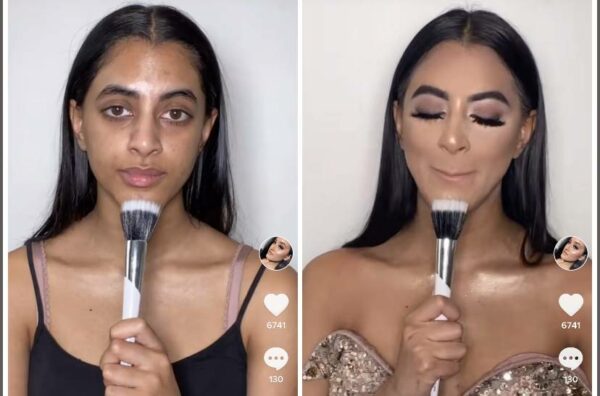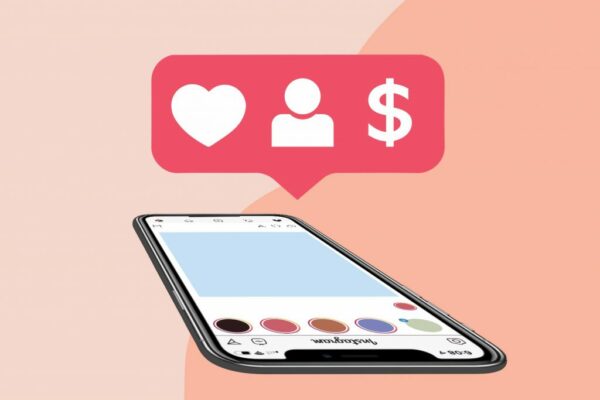This 26-year-old influencer quit her corporate job at a Big Four accounting firm to become a full-time content creator

This 26-year-old influencer quit her corporate job at a Big Four accounting firm to become a full-time content creator.
Tanvi Shah, a social media influencer, knew she was taking a big risk when she quit her corporate position at a Big Four accounting company to pursue her dream of becoming a full-time influencer.
Tanvi Shah became well-known after she began posting videos on Tiktok. She has a total of 73.5k Instagram followers.
She hasn’t always been a social media queen, though. Her resume reveals that she transitioned from corporate to digital content provider.
PWC, the world’s second-largest professional services network, hired her as a banking and capital market associate. It is one of the big four accountancy firms, with 284,000 employees and branches in 157 countries and 742 locations.
She uses social media to express her Indian culture while living in London. She shows her admiration and affection for it, inspiring many others to learn more about it.
Her traditional Indian perspectives on weddings and festivals have also gained traction with online audiences. She is also a BBC Asian Network presenter, where she discusses British Asian life, culture, and music.
Similarly, she posts about her daily life on her YouTube account. She creates vlogs and occasionally even films in which she recommends places to visit, how to dress up and apply makeup for large fat Indian weddings, and other styling tips, which are highly accepted by the audience. Her channel is gaining in popularity, with 3.55k subscribers as of now.

Corporate life
Tanvi Shah was a business consultant in the past. A corporation has employed her since 2012. Her LinkedIn page lists the several jobs she held at many companies before and after graduating high school. Tanvi studied Economics and Politics at the University of Nottingham.
She began her career at Brightstone Law LLP, where she worked for a week to shadow a senior partner in client meetings. She then spent two weeks at Core Capital Partners LLP.
She was a part of the Insight Program at Barclays UK in 2014. She did but only worked there for a brief time. She began working as a Fixed Income Summer Intern at Ipreo in 2015 and stayed for a month.
She interned at the Royal Bank of Scotland Business as a Commercial & Private Banking Summer Analyst. Finally, in 2016, she was offered a full-time position at PWC, which she held for three years.
Tanvi began her career with the organization as a Banking and Capital Markets Associate. She was promoted to Senior Associate after three years. In 2021, she left the company to work as an assistant manager consultant with KPMG. In 2022, she departed KPMG.

Her journey to become a full-time content creator
She told Insider, “It was terrible, and I’m still terrified.” Her parents were first unaware of the potential of social networking. “Knowing that I have a basis to fall back on and that, worst-case scenario, I can get another job was a great comfort for them.”
Shah admitted that when she first started posting on social media regularly, she had no intention of it becoming her main source of revenue.
Then, as the pandemic spread, she began devoting more time to creating videos for social media platforms like Instagram, TikTok, and YouTube that offer job guidance.
“I began to devote more time to improving the quality of my photographs and movies, and as a result, I worked with a variety of businesses,” she explained.
“I quickly acquired a following because I was talking about topics that were not commonly covered, like mental health in the business world and being South Asian.”
Shah’s work acquired a following, and she began thinking about how she could commercialize it after a year.
Shah had 5,000 Instagram followers before she started posting higher-quality content, which quickly grew to 10,000 during the pandemic. She now has over 38,000 Instagram followers and almost 70,000 TikTok followers.
According to the social media influencer, her wages per post are determined by the amount of work she receives each month and the brands with which she collaborates.
“The objective has been to match my monthly salary of £3,000 ($3,600). A post costs £200 ($242), but a large firm may pay for a content bundle that includes an Instagram reel and a TikTok video. The most expensive contract was £1,500 ($1819) for three pieces of content for one company.”
Shah began creating social media content as a side hustle, but within a year, he had a slew of options, ranging from modelling jobs to radio hosting gigs. The London-born influencer soon discovered she was having trouble juggling her time as a content producer with her corporate job.
“I was waking up at 6 a.m. to edit videos and realized there wasn’t as much job fulfilment in the corporate world, and my interest had migrated to social media,” Shah explained.
“I’ll never be able to do it full-time if I don’t attempt. I chose to leave from my Big Four position to give myself more time.”
Managing a side venture, Shah said, felt like living a double life until she quit her corporate job. She became aware that the last managers were looking at her posts, making her wary. “It felt like I was Hannah Montana returning from work and doing something completely different, but I am a multidimensional person.”
Shah had a definite professional path and advancement plan in the finance business. She was concerned, though, that it would have a negative impact on her mental health.
“I can manage my mental health when I work for myself as a creator by setting boundaries,” she said. “I won’t be out of cash due to last month’s earnings if I decide to take a week off.”
Shah’s expertise in accounting and consulting, and her knowledge in money management, aided her in becoming self-employed.
“The effort that goes on behind the scenes is not visible to the public. I am a firm believer in self-management and use at least five different apps and tools to help me plan and organize my time, ” she stated.
“It helps that I’m familiar with fundamental tax and accounting principles and a method for tracking profit and loss and spending. I’m a finance gal and a nerd, so checking my profit margins was my second nature.”

How Do Influencers Make Money?
Because of the tremendous popularity of social media platforms like Facebook, Instagram, Snapchat, and YouTube, a new type of celebrity has emerged: the social media influencer. Every day, more people convert their online presence into full-time jobs by monetizing their social media followings. But how can social media influencers monetize their platforms?
Who is an Influencer?
An influencer is someone who makes money by influencing other people’s purchasing patterns. In exchange for money from the products they promote, a social media influencer connects with people who follow them on online platforms like Instagram, YouTube, LinkedIn, and Tiktok to influence their purchasing decisions.

12 Ways Social Media Influencers Make Money
Many people are aware of influencers but are still curious about how they make money on social media. Influencers generate money in many ways, including through sponsored posts, webinars, and even influencer marketing and traditional advertising. Social media influencers make more money than they could at a 9-5 job by exploiting their online presence.
1. Sponsored Social Media Posts
Influencers can profit from every social media post, particularly if the content is of excellent quality. As a result, sponsored content has become one of the most lucrative revenue streams for influencers. They are paid to promote businesses and services on their social media profiles through sponsored posts. This sponsored content could appear in an Instagram story, a Facebook post, or a YouTube video, among other places.
2. Webinars on Social Media Platforms
Some influencers have earned a reputation as subject matter experts. This is particularly true of LinkedIn influencers. Their followers are frequently willing to pay for these influencers’ advice. Social media influencers can entice their fans to pay for access to content in an engaging tutorial by hosting webinars or online seminars. Influencers can make money not only by organizing a live webinar, but their followers can pay to access the content later via a social media platform, blog, or another website.
3. Becoming a Brand Ambassador
As brand ambassadors, a lot of influencers make money. Rather than merely promoting a brand through a single sponsored post, the influencer will frequently mention the company’s products and services to raise overall brand awareness. For example, a brand might pay an influencer to post about the brand regularly for 6-12 months. Top fitness influencers usually promote a number of businesses.
4. Selling Digital Products
An influencer’s ability to make money by marketing digital products isn’t limited to posting webinars on social media. E-books and online lessons might be promoted over time on a blog, another website, or social media. Followers who want to learn more about the influencer’s talents will buy these digital things, and sales will grow over time.
5. Creating Product Lines
Many influencers have amassed large enough followings to sell their merchandise. Creating product lines as a way to make money as a social media influencer is becoming increasingly popular. A fashion blogger, for example, may start their own clothing line by developing their own goods or co-creating product lines with a designer. Other social media influencers market personal-branded items on sites including Facebook, TikTok, Instagram, and YouTube.
6. Website Advertising
Just as bloggers have made money from adverts on their websites for decades, social media influencers with a large following can profit from advertising payments. Bloggers and influencers are paid in certain situations depending on visitor clicks, while others are compensated whenever an advertisement displays on a follower’s screen.
7. Reselling Free Products
Most influencers make money by giving away free stuff. It’s fairly uncommon for a brand to provide free samples to a social media influencer in exchange for a shoutout or endorsement. Not only may these free products, which are frequently clothing, beauty, and personal stuff, be considered some form of revenue, but the influencer can also resale the free items on websites like Poshmark, making a profit.
8. Events and Appearances
Because social media influencers are modern celebrities, they can draw crowds wherever they go. One approach for them to gain money is to host a live or online event and charge followers to attend. A brand may pay a social media influencer to attend its own event, knowing that the celebrity’s presence will draw a crowd.
9. Affiliate Marketing
Affiliate marketing is another way for influencers to generate money. An influencer shares a link to a product page and is compensated for any sales made due to the link. In an Instagram post where they illustrate how to apply eyeshadow, a beauty influencer can offer a link to a designer palette. The influencer is then paid a portion of each sale made by someone who followed the link.
10. Donations, Tips and Subscriptions
Influencers can also make money by having their fans give it to them as gifts. Many social media influencers accept tips and payments via their websites or services, such as Patreon, allowing members to support influencers with monthly donations in exchange for exclusive content. Others will have a widget on their websites where fans may give a small amount to buy them a cup of coffee.
11. Creating Content for Blogs, Vlogs and Podcasts
Most social media stars’ followers don’t only show up for their usual tales and postings. It’s not enough for them to talk about what they ate for dinner or what they thought of the most recent movie they saw. They must produce material. Social media influencing may be a full-time job for content creators who spend hours every day generating posts for their blogs, vlogs, and podcasts. They won’t be able to advertise things or make money if they don’t have any content.
12. Traditional advertising
Just because an influencer got their start on social media doesn’t mean that’s where their reach ends. As many social media influencers have more than one million followers (and far greater exposure), they are now partnering with major firms to promote products to even larger audiences. An individual with the largest following may be included in television commercials or on billboards.

How much money do influencers make?
What are the earnings of influencers? Influencer earnings vary greatly depending on a multitude of things. Compared to those with fewer followers, social media profiles with the highest followings typically earn a lot of money. More people will listen to their advice, but there are more viewers, making all of their information more valuable. An influencer who has only recently begun their career may only earn a few hundred dollars per month, whereas top influencers regularly earn millions of dollars per year.
According to Vox, micro-influencers, who have between 10,000 and 50,000 followers, can earn between $40,000 and $100,000 per year. Top Instagram influencers with millions of followers, on the other hand, can make tens of thousands of dollars per post, resulting in millions of dollars per year. For example, Kylie Jenner is said to earn more than $1 million for a single social media post. Loren Gray, a prominent Tiktok influencer, earns more than $53 million yearly.
Edited by Prakriti Arora




